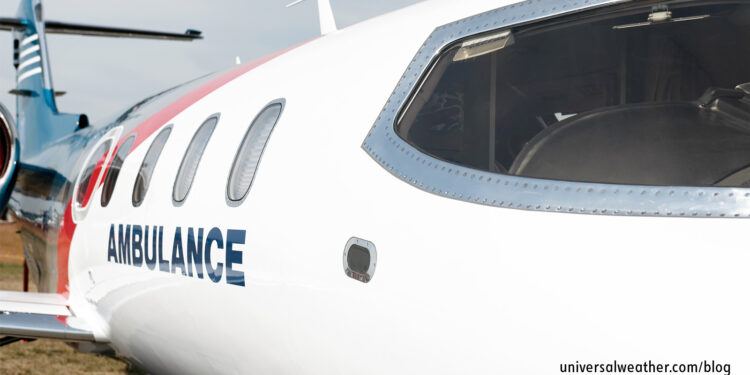5 Tips for Planning Air Ambulance Flights

Most air ambulance flights are short-notice charter (non-scheduled commercial) operations. Due to the nature of these flights, civil aviation authorities are generally very cooperative and accommodating in terms of permits and operational requirements. Still, potential operating issues/glitches are possible, and effective trip pre-planning remains just as important as ever.
If you are operating as an air ambulance, the following is an overview of what you need to know:
1. Advance notification requirements
Depending on the urgency of the flight, landing and overflight permits can usually be arranged within a few hours. For example serious or unstable medical situations and organ transfers are considered “urgent” requests. While most air ambulance permit requests will be processed anywhere from a few hours to a full day, the processing time depends on the country. For example China requires 24 hours’ lead time, and Chinese authorities are stringent on this. Canada processes air ambulance permits immediately without delay. Jamaica forgoes permit requirements for qualified air ambulance flights.
2. Permit documentation
For air ambulance permit applications, you’ll need to provide aircraft/crew information, as well as medical-related details. Required documentation usually includes airworthiness and registration certificates, worldwide insurance, full crew information, and the complete schedule. In addition you’ll need to provide full patient information along with hospital information from departure or destination point, a local hospital contact, and a phone contact for the party picking up/dropping off the patient.
3. Visas may be required
Depending on the nationality of crew members/passengers, visas may be needed. While some countries permit visa-free access for crew members/patients on an air ambulance flight, others enforce the same visa requirements as they do for all general aviation operations. For example when operating air ambulance flights to China, crew members must all have C-type visas prior to arrival.
4. Planning tips
Air ambulance operations may be exempted from noise and/or curfew restrictions, depending on the airport and country the flight is operating to. Overtime, to extend airport and/or Customs, Immigrations, and Quarantine (CIQ) hours, may be available for these types of flights, but advance notification must be provided. Charges will likely be applicable, and approval will be at discretion of the airport authority.
As air ambulance operations are often on shorter-range aircraft, you’ll need to consider tech stop requirements and local operational issues. Most countries do not require CIQ clearance on international tech stops; however, there are exceptions to this – including Argentina and the U.S.
5. Ground handling considerations
Always pre-notify your ground handler if you’re operating an air ambulance flight. Your ground handler will need relevant patient and hospital information – along with contact details for the doctor responsible – in order to make arrangements and request ambulance access airside. You’ll need to work with your ground handler to determine if CIQ clearance will be done at the aircraft or in the terminal. Any special ground service requirements – such as provision of pressurized medical oxygen – should be requested as early as possible to avoid day-of-operation delays. Always confirm visa requirements and if these visas are obtainable on arrival with your 3rd-party provider or ground handler.
Conclusion
While it’s preferable to provide 24-hour notice for permit requests, CIQ, and ground handling, there are times when air ambulance operators may only be able to provide a couple of hours’ notice. Best practice is to provide full and proper documentation for all permit requests and to ensure that patient information is forwarded as soon as available so that your 3rd-party provider or ground handler can set up all needed arrangements.
Questions?
If you have any questions about this article, contact me at brunelcesar@univ-wea.com.




